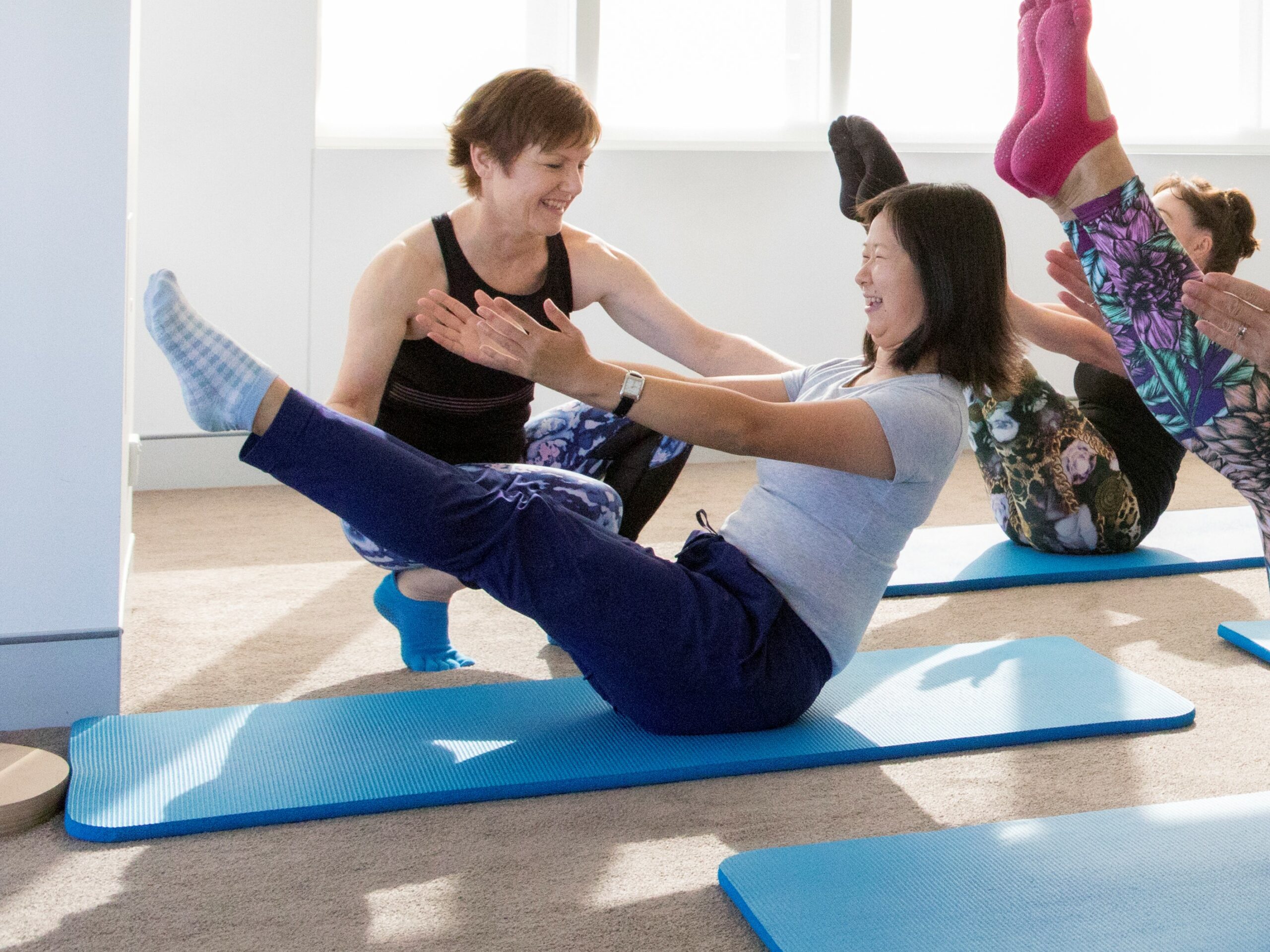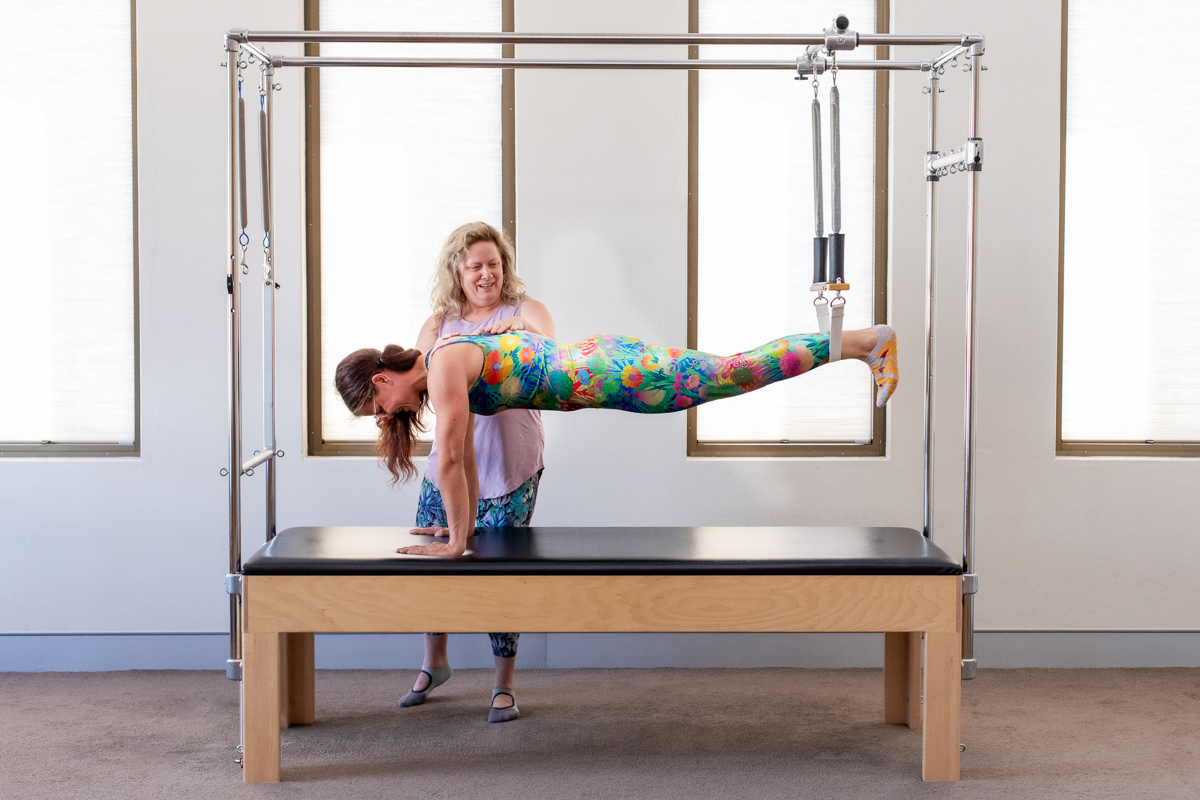The way we structure a Pilates studio will define our profitability and quality of client outcomes as well as the long-term sustainability of our instructor teams.
In today’s market, small studios face pressure from both ends: on one side, the big-box gyms running high-volume reformer classes, and on the other, medical or physiotherapy-led models. Between these extremes our boutique, clinical Pilates studio are delivering a personalised, precise Pilates services, that are highly effective due to a deep commitment to client progress.
In Episode 2 of our podcast series, Diaries of Professional Pilates Instructors, I sat down again with Carla Ricalis, Co-founder and Director of Studio3 in Toronto. Our discussion explored how business models shape studio operations, but also the future of Pilates as a profession.
The Challenge: Finding a Sustainable Model
Studios often fall into the trap of trying to compete with larger operators by mimicking their offerings. Drop-in reformer classes, for example, might bring bodies through the door, but they can distract the studio from the main game of building the habit, connection, and sense of belonging that keeping the long-term clients.
Boutique and clinical Pilates studios usually excel by offering:
But implementing more sustainable & profitable models requires a balance of timetable structures, instructor satisfaction & availability, studio space and business costs.

Why Belonging Beats Volume
Carla highlighted that larger studios often sacrifice connection, in favour of volume. Clients may move, sweat, and leave, but without the deeper relationships that transform casual participation into an “Excellent Pilates Exercise Habit.”
This distraction of your focus as a business owner matters. A consistent schedule, the same instructor, and familiar peers deliver results & satisfy a fundamental human need for belonging. That need, when met, becomes one of the most powerful retention tools a studio can have.

“Collectively, I think that… even though we’re all unique in the way we teach Pilates or in the equipment that we use or in the approach we take, we’re all collectively the same in terms of that quality, that movement knowledge, the commitment that we have to our clients and the experience that they have in the studio. And that’s sort of an opportunity… for us to collectively rise to the top and show that distinction as opposed to this fragmented industry.” — Carla Ricalis
Lessons from History
Pilates has always wrestled with questions of identity: what counts as “real” Pilates, and how do different methods compare? Carla noted that 15 years ago the industry was fractured into silos, each claiming authority. Today, with big-box gyms and medical approaches dominating opposite ends of the Pilates business model spectrum, boutique studios face an opportunity: unite around shared values of quality, repertoire knowledge, and commitment to client progress.
Rather than fragmenting, this collective identity can differentiate our type of personalised studios by showing the public that Pilates isn’t just exercise, it’s education, transformation, and care.
The Real Differentiators: Education and Standards
One major theme is education. A weekend certification simply cannot equip instructors with the depth of knowledge required to deliver personalised, safe, adaptable, and progression-driven Pilates. Quality training, whether from Stott, Polestar, International or other reputable programs, provides the hours of Pilates student instructor study, practice, and observation that underpin minimum professional standards.
Carla raised the potential for an international or regional standard of recognition: something that could help clients, insurers, and governments understand what a legitimate Pilates studio or certification looks like. This could serve as both protection and promotion for the Pilates industry at all levels, while preventing “Pilates-inspired” models from diluting public understanding.
What This Means for Studio Owners
Improving your Pilates business model isn’t about chasing trends or copying large operators. It’s about clarifying your differences and structuring your studio for long-term success. That means:
By focusing on these areas, studio owners can strengthen their brand of Pilates, safeguard their future, and collectively raise the profile of Pilates Instruction as a valuable profession for all stakeholders.
Hear the Full Conversation
This blog only scratches the surface of our discussion on how business models shape the future of Pilates.
Listen to Episode 2 of Diaries of Professional Pilates Instructors on The Pilates Business Podcast to hear the full discussion. Available now on all major podcast platforms.